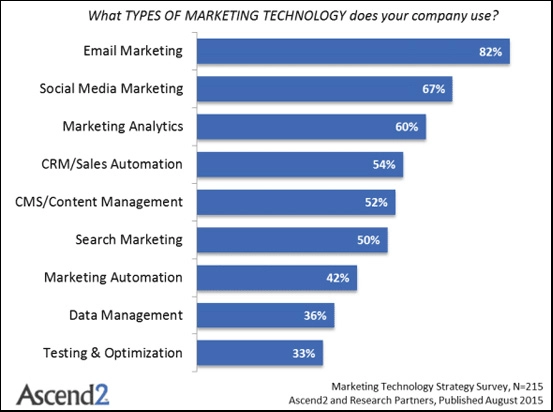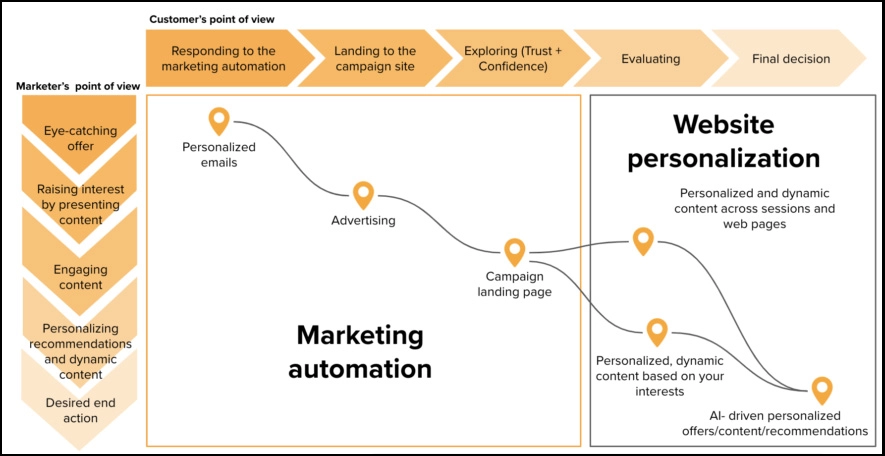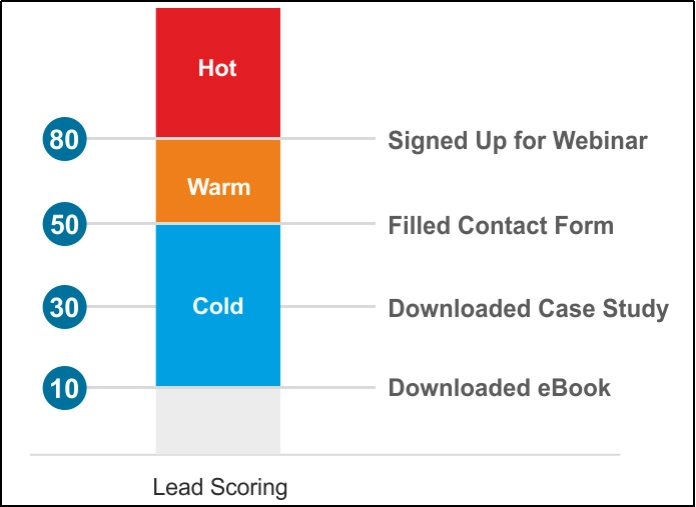
Introduction
B2B marketers are always for marketing qualified leads (MQLs) to nurture.
In simple terms, MQLs are prospects that, based on lead intelligence and analytics undertaken by marketers are likely to convert and become customers. The criteria for identifying quality leads varies from one company to another.
For B2B companies, MQLs are valuable because their focus on lead quality, not quantity. For example, a company is better off with a small number of high value MQLs who have high purchasing power, as opposed to numerous inquiries from leads that are mildly interested. C-suite marketing is a classic example of this – you had better have a few C-suite leads than numerous non-C-suite leads as the former are likely to be decision makers.
Statistics support MQLs in this light with 70% of B2B marketers stating their need for high value leads in their lead generation initiatives.
Due to the quality that is linked to MQLs, generating them takes hard work. With objectives and targets to achieve, B2B marketers are often constrained of time to focus fully on MQLs. This is where marketing automation comes in handy.
Defined as the process of automating aspects of marketing and lead generation processes using software, marketing automation enhances the ability of B2B companies to generate better leads, without having to invest as much time as conventional outreach processes.
In the last decade, B2B adoption of marketing automation has increased significantly, with 49% of businesses are now using this technology, based on EmailMonday data. Besides generating leads, B2B companies can use marketing automation to nurture MQLs into sales qualified leads and ultimately, into customers.
How Does Marketing Automation Work?
There are different kinds of marketing automation tools – email marketing is among the most common ones. Using these tools, B2B companies are able to automate the entire marketing processes, from customer opt-ins through to customer follow-ups and behavioral patterns. Marketing automation has different aspects – see the image below.

What this means is that companies that opt to automate their marketing function are able to:
- Send prospects a series of targeted messages to pique their interest in a product or service offering as soon as they opt-in
- Automate sales and marketing workflows to control the kind of content that prospects receive and what they need to do to receive it
- Create email lists and target prospects with content that encourages them to buy more, sign service level agreements or complete any other desirable action.
- Track customer browsing behavior and send them content on stuff they’ve demonstrated interest in
The image below shows other benefits that accrue to B2B companies that use marketing automation:

In this article, we look at how B2B companies can leverage marketing automation tools to get the best out of their MQLs:
1. Personalize Content for your MQLs
Content plays an important role in building trust between MQLs and your company.
A report by DemandGen shows that 47% of B2B buyers view and engage with up to five content pieces before talking to a sales person. This is why 96% of B2B buyers want quality content from thought leaders in their industries.
Sending your MQLs the wrong content can cause them to lose interest in your offerings. This is why personalized content is critical in nurturing MQLs.
People want to see stuff that is relevant to them – this is changing the way companies do business.
Statistics show that personalized emails have 6 times higher transaction rates than generic emails. At the same time, emails that have a personalized subject have a 26% higher open rate.
B2B companies can drive lead interactions using marketing automation tools. This means leveraging the interests of their MQLs to send them dynamic content.
According to Hubspot, ‘dynamic content is a term for the aspects of a website, ad, or email body that change based on the interests or past behavior of the viewer. It creates an experience that’s customized specifically for the visitor or reader at that moment.’
Using marketing automation software, B2B companies can collect and analyze behavioral data from their marketing automation software. With this data, you can nurture those leads by implementing personalized content campaigns.
There are various ways B2B companies can use marketing automation to personalize content for their marketing qualified leads. They include emails, advertising and website pages as shown in the diagram below.

Source: Frosmo
2. Engage MQLs Consistently through Email Marketing
When it comes to nurturing leads, maintaining consistency is key. Consistent engagement with MQLs places your brand on their mind for a long time. This means when they are ready to make a purchase, they’ll think of you first.
Marketing automation enables B2B companies to consistently interact with their MQLs on multiple touchpoints. While there are various marketing automation tools that can facilitate this engagement, email marketing automation appears to be the most preferred tool among B2B companies.
There are many things B2B companies can do with email marketing software. For instance, they can segment their audiences based on interests, industry, company size and other aspects.
Email automation also makes it possible for B2B marketers to send scheduled email blasts to leads depending on how they interact with your brand. Companies can launch lead nurturing email campaigns and build relationships with leads by sending automated, personalized emails.
The good thing about lead nurturing emails is that they are customized based on the data, behavior and analytics of potential leads. This enables B2B marketers to take high value leads through a journey that ultimately influences their purchase behavior. Here are tips to help you get the best out of MQLs through emails:
- Use catchy subjects that make leads want to open your emails. To do this, make it specific, demonstrate value and create a sense of urgency in your subject
- Build trust by branding your company or team as the sender
- Give your email a strong body that integrates texts with visuals like images or videos – see how YouTube rocks this strategy on the image below.

3. Score and Nurture MQLs
Using marketing automation, B2B companies can score their leads and nurture them based on where their leads are on the buyer’s journey. MQLs are scored based on their engagement with the company’s content. Lead scoring can only happen after marketers have assigned specific scores to leads based on how they engage with their content.
Marketing automation tools help a great deal with lead scoring. By scoring leads, marketers can classify their MQLs and determine when those leads should be handed over to the sales teams for closure. The image below shows the various lead scoring classifications.

B2B marketers should nurture and score leads concurrently. The aim is to move leads from one level to another.
For instance, if a cold lead visits your site and downloads an ebook, you need to score that lead. Using marketing automation, you can track the lead’s behavior in the coming month and score them every time they engage with the site by downloading content from your site or via email campaigns. Once their scores reach a certain threshold – like 80 points, you can pass the lead over to the sales teams.
Marketing automation makes it easy for marketers to pass sales qualified leads over to sales teams. For instance, an automation software can have lead alerts that send emails to sales reps anytime an MQL reaches a set score threshold.
4. Share Content in Formats that Personas Prefer
A typical B2B buying process involves different stakeholders across various levels of organization structure. This means that often, companies will have three or more personas representing the decision makers in a company. For instance, a company could have:
- Decision makers including CEOs or CMOs who sign the contracts
- Researchers or Influencers who include specialists and managers. These influence different purchase decisions
- Approvers who include VPs or directors who approve projects and decide whether specific purchases should be made or not
Each of these personas engages with B2B marketing content differently. For instance:
- Researchers or influencers are prone to reading blogs
- Decision makers will engage with in depth content like ebooks and whitepapers
- Approvers a squeezed for time and may opt to listen to podcasts
To nurture MQLs, B2B marketers need to understand these differences and focus on presenting content in formats that suit their target personas. Marketing automation rules allow marketers to nurture MQLs better by sending content in formats that each persona prefers.
Final Thoughts
Every business wants to turn leads into buyers. After attracting and identifying MQLs, marketers turn their attention to nurture them down the sales funnel. This is a complex process because each buyer has his own journey. Marketing automation software provides useful tools that enable marketers to provide MQLs with the information they need depending on where they are on their purchase journey.
From segmenting leads and scoring them, to personalizing content and engaging them through email campaigns, B2B marketers can use marketing automation tools to get the best from MQLs and effectively push them down the sales funnel.
Our blog
Latest blog posts
Tool and strategies modern teams need to help their companies grow.

A successful webinar requires more than just a great speaker and a compelling topic. ...

Modern business success depends on more than just acquiring new customers because sus...

Generative AI in B2B marketing represents more than a passing trend because it active...






